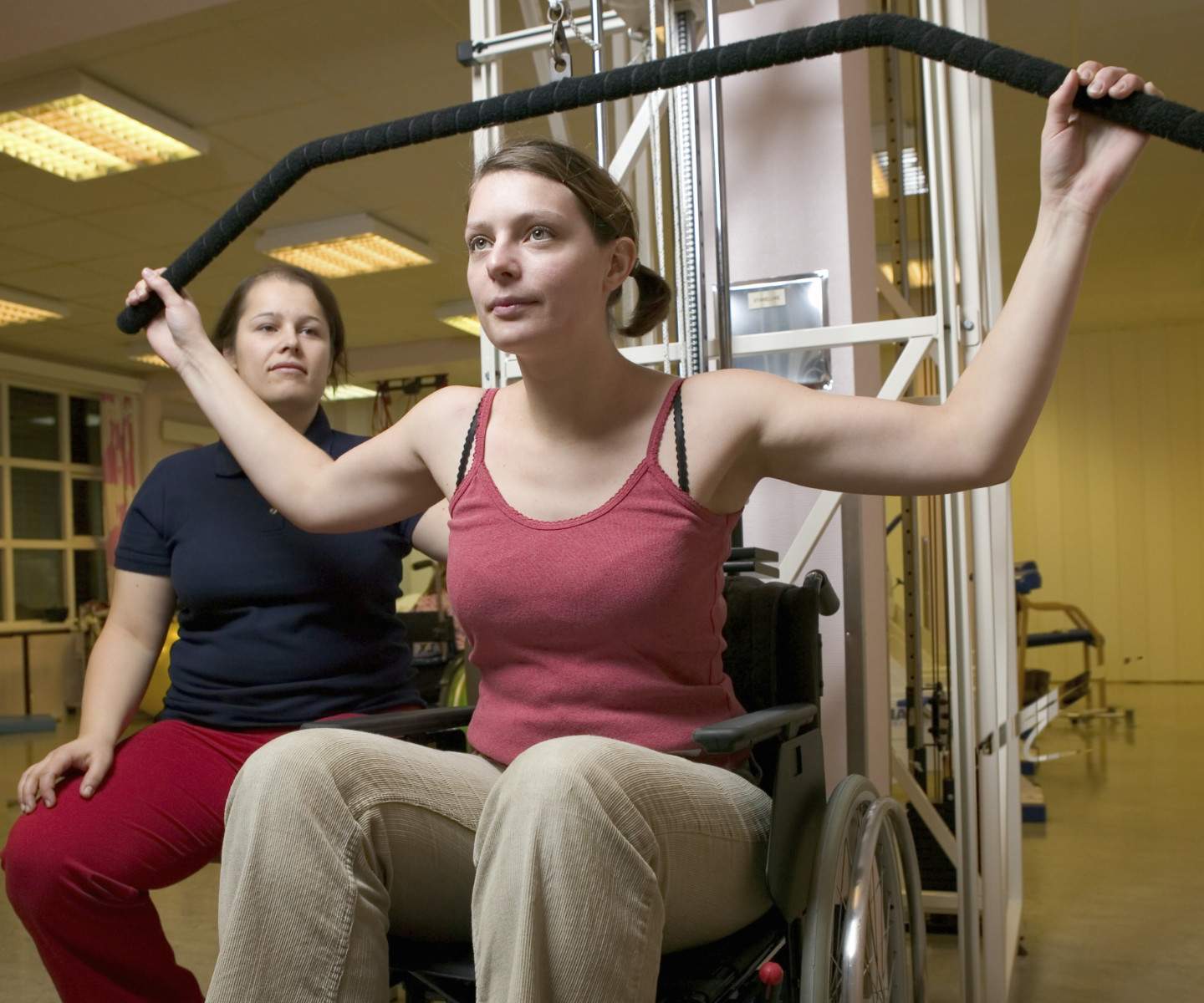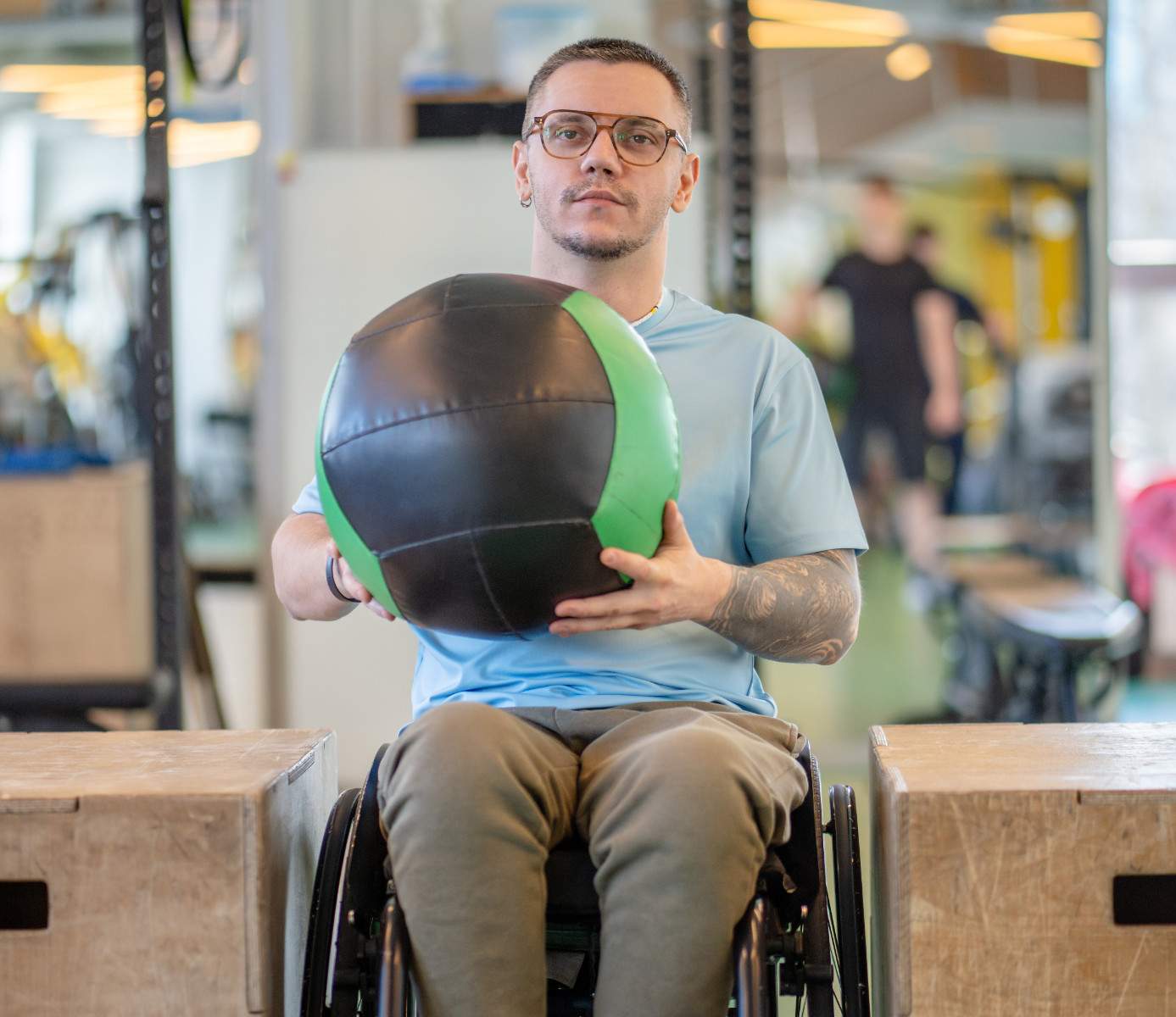As the new year gets into full swing, it’s time to dust off those old moves and reinvigorate your aqua classes, writes Claire Sawatzky.
Have you ever felt mid-class that you’ve been doing the same moves in the same ways, saying the same cues and even telling the same old jokes?
This happened to me recently, and it was just the push I needed to work on some new material for my classes. However, I struggled to get any new ideas to flow, so instead of waiting for a burst of creativity, I tried a more systematic approach to tease out some different concepts.
I questioned, ‘How can we use an old move to create something a little bit different, or even discover a fresh and exciting new move?’
Let’s consider the following elements of aqua exercise and how they might be adapted to freshen up routines:
Hand shape
How can the hand shape be changed? The way in which the hands are used in aqua exercise can have a huge impact on the intensity of a move and affect how successful participants feel executing the move. They also offer a simple way to add variety to a base aqua move. Variations on hand shape include a fist, flat palm, scooping hands and slicing action.
Lever length
How can the lever lengths be changed? When we consciously keep our arms and legs straight in the water, a greater degree of muscle activation is required to move them, as a higher amount of the body’s surface area is being pulled against the resistance of the water. This makes the moves more powerful and uses more energy to complete.
If you want to make the move much smaller and quicker, you instruct participants to bend more at the joints, in particular the knees and elbows. This reduces the drag of the limb through the water, making for a faster move.
Movement direction
Would a different movement direction be effective? Changing the direction of the movement – forward and back, side-to-side, on a diagonal or in a circle – can be a great way to stimulate recruitment of different muscles in participants. Learning a new movement pattern also requires greater concentration, which enhances brain function.
Pool position
Could a different pool position be used? Changing the position of participants in the pool is a really simple way to make a basic move more interesting. It is also an effective way of increasing the intensity of a move.
When participants move in one direction, for example rocking horse to the shallow end, a flow of water is created in one direction. Instructing participants to quickly turn around and run through this flow of water will increase their energy output as they move into the resistance created by the heavy flow of water against them.
Instructing participants to stand still after creating a strong flow of water, and to complete an arm exercise with stable legs and torso, will activate the core as it works to hold the body still.
The same drag in the water can be completed back and forth at the wall, as we would do when performing a ‘Murray River’ (a strong rapid kick off backwards from the pool edge, followed by immediately running through the turbulence and flow of the water back to the wall.)
Sometimes something as simple as teaching from a different spot poolside, or getting participants to perform the same move in a different place, can keep participants better engaged.
Buoyancy
Our biggest point of difference in aqua fitness, compared to land-based exercise, is buoyancy. Participants love the floating feeling. So, how can you use the buoyant properties of water to increase challenge?
One way is by incorporating equipment into the workout. The greater the surface area of the equipment, and the lower it is taken into the water, the greater the resistance exerted on participants’ muscles. For example, a donkey kick can be enhanced with a kickboard. For a less intense progression, have the kickboard near the surface and slice it through the water; for a significantly stronger move, take the kickboard deeper into the water and push and pull with the two faces of the board. Be careful, however, not to add equipment to a workout just for the sake of it: always consider whether it truly enhances a move before introducing it.
We can also use buoyancy to attempt a move in suspension without equipment. Keep in mind that for leaner body types it can be more challenging to remain buoyant as they have less fat tissue.
Weighted
Could the move become weighted? By keeping one or both legs still on the pool floor and completing an exercise with a stable torso, the core must work much harder, changing the focus of the exercise.
This also provides a good opportunity to teach your participants how to properly engage their pelvic floors and muscles of the core. You may be surprised by how many participants have never been taught how to do this effectively.
So, now we’ve covered the theoretical application, let’s apply these elements to breathe some new life into some classic aqua moves.
The rocking horse
Base move – I usually complete the rocking horse with long legs and long arms scooping through the water (photo 1).
Hand shape – Changing the hands away from a scooping aqua hand would make a rocking horse too challenging to complete, as we rely on the power in the arms to propel the body forward and back.
Lever lengths – Bending sharply at knees and elbows creates a faster move (photo 2).
Movement direction – Complete one repetition to front left corner then front right corner, repeat continuously throughout one block of music.
Pool position – Travelling to the shallow end and then running back to the start position requires a large expenditure of energy.
Buoyancy – Adding dumbbells to the hands will slow down the movement, but because the muscles will need to work harder it makes it much more challenging. Adding just one dumbbell and passing it between hands will add an extra stability and cognitive component.
Weighted – The strong rocking horse arms are an ideal move to use for a stability exercise.
The front flick kick
Base move – Flick the toes to the front, reaching towards the toe with the opposite hand (photo 3).
Hand shape – A double arm flat palm push (photo 4) increases the resistance against the hands, and therefore the effort required to perform the move.
Lever lengths – Bending at the elbows to perform a bicep curl/ tricep extension adds some variety to the arm pattern.
Movement direction – One front kick, one side kick (photo 5) is a simple way to freshen up flick kicks.
Pool position – Completing flick kicks at the wall with toes lightly touching is a great way to add variety and also change the focus of the move. If you coach a light toe tap and a still upper body and hips, you will find participants need to draw in and activate their deeper core to perform the move correctly.
Buoyancy – As this is a naturally light and buoyant exercise, encourage a strong return of your participants’ feet to the floor of the pool. This will allow them to perform the move more powerfully and use more energy.
Weighted – Although the basic reach in the base move of this exercise is quite light, the double arm flat palm push makes for an effective weighted move, the challenge of which can be further increased by performing it standing on one leg.
Your turn
Brainstorm some ideas for adapting aqua moves that you always perform in the same way, and then try out the reinvigorated versions for yourself in the water. Be sure to ask your class participants how they find the changes to the moves.
Always keep your participants in mind when adding new ideas to your class. Some classes will enjoy and appreciate a change in arms, legs and direction all at once, for others you will need to carefully introduce new exercises one layer at a time, giving them time to learn and master each development before embarking on the next stage.
Claire Sawatzky
Claire is an energetic and innovative group exercise and aqua instructor. Her background in sports science and her passion for sharing her knowledge have led to her fitness presenting on TV, in educational DVDs and at national conferences.
Need more aquatic inspiration? Experience Claire’s energetic delivery and innovative ideas for the pool at her FILEX 2014 sessions:
Aqua fit for life! (with Tamara Vella & Stacey Dolliver) • A1V
Just aqua your age! (with Tamara Vella & Stacey Dolliver) • B3X
Aqua choreography to the max (with Tamara Vella & Stacey Dolliver) • C1V
For more information on Claire’s sessions check out www.filex.com.au where you can also register for the convention or the all-inclusive Gold Pass packages that include access to the essential Business or PT Business summits and breakfast events.


